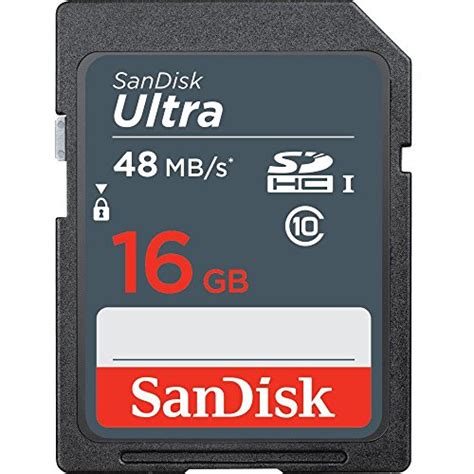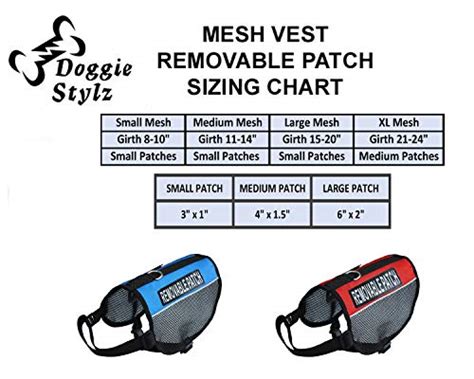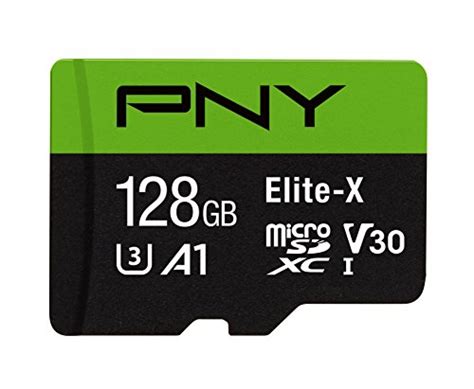Get Support about new MDR
Get Support about new MDR
Classification rules
CHAPTER I
Definitions specific to classification rules
1. DURATION OF USE
1.1. ‘Transient’ means normally intended for continuous use for less than 60 minutes.
1.2. ‘Short term’ means normally intended for continuous use for between 60 minutes and 30 days.
1.3. ‘Long term’ means normally intended for continuous use for more than 30 days.
2. INVASIVE AND ACTIVE DEVICES
2.1. ‘Body orifice’ means any natural opening in the body, as well as the external surface of the eyeball, or any permanent artificial opening, such as a stoma.
2.2. ‘Surgically invasive device’ means:
2.3. ‘Reusable surgical instrument’ means an instrument intended for surgical use in cutting, drilling, sawing, scratching, scraping, clamping, retracting, clipping or similar procedures, without a connection to an active device and which is intended by the manufacturer to be reused after appropriate procedures such as cleaning, disinfection and sterilisation have been carried out.
2.4. ‘Active therapeutic device’ means any active device used, whether alone or in combination with other devices, to support, modify, replace or restore biological functions or structures with a view to treatment or alleviation of an illness, injury or disability.
2.5. ‘Active device intended for diagnosis and monitoring’ means any active device used, whether alone or in combination with other devices, to supply information for detecting, diagnosing, monitoring or treating physiological conditions, states of health, illnesses or congenital deformities.
2.6. ‘Central circulatory system’ means the following blood vessels: arteriae pulmonales, aorta ascendens, arcus aortae, aorta descendens to the bifurcatio aortae, arteriae coronariae, arteria carotis communis, arteria carotis externa, arteria carotis interna, arteriae cerebrales, truncus brachiocephalicus, venae cordis, venae pulmonales, vena cava superior and vena cava inferior.
2.7. ‘Central nervous system’ means the brain, meninges and spinal cord.
2.8. ‘Injured skin or mucous membrane’ means an area of skin or a mucous membrane presenting a pathological change or change following disease or a wound.
CHAPTER II
Implementing rules
3.1 Application of the classification rules shall be governed by the intended purpose of the devices.
3.2. If the device in question is intended to be used in combination with another device, the classification rules shall apply separately to each of the devices. Accessories for a medical device and for a product listed in Annex XVI shall be classified in their own right separately from the device with which they are used.
3.3. Software, which drives a device or influences the use of a device, shall fall within the same class as the device.
If the software is independent of any other device, it shall be classified in its own right.
3.4. If the device is not intended to be used solely or principally in a specific part of the body, it shall be considered and classified on the basis of the most critical specified use.
3.5. If several rules, or if, within the same rule, several sub-rules, apply to the same device based on the device’s intended purpose, the strictest rule and sub-rule resulting in the higher classification shall apply.
3.6. In calculating the duration referred to in Section 1, continuous use shall mean:
3.7. A device is considered to allow direct diagnosis when it provides the diagnosis of the disease or condition in question by itself or when it provides decisive information for the diagnosis.
CHAPTER III
Classification rules
4. NON-INVASIVE DEVICES
4.1. Rule 1
All non-invasive devices are classified as class I, unless one of the rules set out hereinafter applies.
4.2. Rule 2
All non-invasive devices intended for channelling or storing blood, body liquids, cells or tissues, liquids or gases for the purpose of eventual infusion, administration or introduction into the body are classified as class IIa:
In all other cases, such devices are classified as class I.
4.3. Rule 3
All non-invasive devices intended for modifying the biological or chemical composition of human tissues or cells, blood, other body liquids or other liquids intended for implantation or administration into the body are classified as class IIb, unless the treatment for which the device is used consists of filtration, centrifugation or exchanges of gas, heat, in which case they are classified as class IIa.
All non-invasive devices consisting of a substance or a mixture of substances intended to be used in vitro in direct contact with human cells, tissues or organs taken from the human body or used in vitro with human embryos before their implantation or administration into the body are classified as class III.
4.4. Rule 4
All non-invasive devices which come into contact with injured skin or mucous membrane are classified as:
This rule applies also to the invasive devices that come into contact with injured mucous membrane.
5. INVASIVE DEVICES
5.1. Rule 5
All invasive devices with respect to body orifices, other than surgically invasive devices, which are not intended for connection to an active device or which are intended for connection to a class I active device are classified as:
All invasive devices with respect to body orifices, other than surgically invasive devices, intended for connection to a class IIa, class IIb or class III active device, are classified as class IIa.
5.2. Rule 6
All surgically invasive devices intended for transient use are classified as class IIa unless they:
5.3. Rule 7
All surgically invasive devices intended for short-term use are classified as class IIa unless they:
5.4. Rule 8
All implantable devices and long-term surgically invasive devices are classified as class IIb unless they:
6. ACTIVE DEVICES
6.1. Rule 9
All active therapeutic devices intended to administer or exchange energy are classified as class IIa unless their characteristics are such that they may administer energy to or exchange energy with the human body in a potentially hazardous way, taking account of the nature, the density and site of application of the energy, in which case they are classified as class IIb.
All active devices intended to control or monitor the performance of active therapeutic class IIb devices, or intended directly to influence the performance of such devices are classified as class IIb.
All active devices intended to emit ionizing radiation for therapeutic purposes, including devices which control or monitor such devices, or which directly influence their performance, are classified as class IIb.
All active devices that are intended for controlling, monitoring or directly influencing the performance of active implantable devices are classified as class III.
6.2. Rule 10
Active devices intended for diagnosis and monitoring are classified as class IIa:
Active devices intended to emit ionizing radiation and intended for diagnostic or therapeutic radiology, including interventional radiology devices and devices which control or monitor such devices, or which directly influence their performance, are classified as class IIb.
6.3. Rule 11
Software intended to provide information which is used to take decisions with diagnosis or therapeutic purposes is classified as class IIa, except if such decisions have an impact that may cause:
Software intended to monitor physiological processes is classified as class IIa, except if it is intended for monitoring of vital physiological parameters, where the nature of variations of those parameters is such that it could result in immediate danger to the patient, in which case it is classified as class IIb.
All other software is classified as class I.
6.4. Rule 12
All active devices intended to administer and/or remove medicinal products, body liquids or other substances to or from the body are classified as class IIa, unless this is done in a manner that is potentially hazardous, taking account of the nature of the substances involved, of the part of the body concerned and of the mode of application in which case they are classified as class IIb.
6.5. Rule 13
All other active devices are classified as class I.
7. SPECIAL RULES
7.1. Rule 14
All devices incorporating, as an integral part, a substance which, if used separately, can be considered to be a medicinal product, as defined in point 2 of Article 1 of Directive 2001/83/EC, including a medicinal product derived from human blood or human plasma, as defined in point 10 of Article 1 of that Directive, and that has an action ancillary to that of the devices, are classified as class III.
7.2. Rule 15
All devices used for contraception or prevention of the transmission of sexually transmitted diseases are classified as class IIb, unless they are implantable or long term invasive devices, in which case they are classified as class III.
7.3. Rule 16
All devices intended specifically to be used for disinfecting, cleaning, rinsing or, where appropriate, hydrating contact lenses are classified as class IIb.
All devices intended specifically to be used for disinfecting or sterilising medical devices are classified as class IIa, unless they are disinfecting solutions or washer-disinfectors intended specifically to be used for disinfecting invasive devices, as the end point of processing, in which case they are classified as class IIb.
This rule does not apply to devices that are intended to clean devices other than contact lenses by means of physical action only.
7.4. Rule 17
Devices specifically intended for recording of diagnostic images generated by X-ray radiation are classified as class IIa.
7.5. Rule 18
All devices manufactured utilising tissues or cells of human or animal origin, or their derivatives, which are non- viable or rendered non-viable, are classified as class III, unless such devices are manufactured utilising tissues or cells of animal origin, or their derivatives, which are non-viable or rendered non-viable and are devices intended to come into contact with intact skin only.
7.6. Rule 19
All devices incorporating or consisting of nanomaterial are classified as:
7.7. Rule 20
All invasive devices with respect to body orifices, other than surgically invasive devices, which are intended to administer medicinal products by inhalation are classified as class IIa, unless their mode of action has an essential impact on the efficacy and safety of the administered medicinal product or they are intended to treat life- threatening conditions, in which case they are classified as class IIb.
7.8. Rule 21
Devices that are composed of substances or of combinations of substances that are intended to be introduced into the human body via a body orifice or applied to the skin and that are absorbed by or locally dispersed in the human body are classified as:
7.9. Rule 22
Active therapeutic devices with an integrated or incorporated diagnostic function which significantly determines the patient management by the device, such as closed loop systems or automated external defibrillators, are classified as class III.
Reach out in case you need support
Your Name (required)
Please prove you are human by selecting the Plane .
Reach out to UKCA experts team
Your Name (required)
Please prove you are human by selecting the Flag .
We offer an easy and low-cost software solution to manage UDI and communicate with EUDAMED. Try it now for free!
Your Name (required)
Name
Company
Name
Company
Powered by TS Q&E - ISO 13485:2016 Medical Device Consulting Services
 Smead 100 Recycled Pressboard Classification File Folder 1 Divider 2quot Expan
Smead 100 Recycled Pressboard Classification File Folder 1 Divider 2quot Expan
 Classic Accessories Veranda Water Resistant 11 Foot Patio Umbrella Cover
Classic Accessories Veranda Water Resistant 11 Foot Patio Umbrella Cover
 Sandisk 16 Gb Class 10 Sd Hc Ultra Flash Memory Card 10 Pack Bundle With
Sandisk 16 Gb Class 10 Sd Hc Ultra Flash Memory Card 10 Pack Bundle With
 Fairwin Braided Leather Dog Training Leash 6 Foot 56 Foot Military Grade H
Fairwin Braided Leather Dog Training Leash 6 Foot 56 Foot Military Grade H
 3m Reflective Dog Leash 5ft Long With Traffic Padded Handle Dog Training Leas
3m Reflective Dog Leash 5ft Long With Traffic Padded Handle Dog Training Leas
 How To Be Your Dogs Best Friend The Classic Training Manual For Dog Owners
How To Be Your Dogs Best Friend The Classic Training Manual For Dog Owners
 Classical Naptime For Tots
Classical Naptime For Tots
 Doggie Stylz Set Of 2 Reflective Therapy Dog In Training Removable Patches Wit
Doggie Stylz Set Of 2 Reflective Therapy Dog In Training Removable Patches Wit
 6 Pcs Service Dog In Trainingworkingstress Amp Anxiety Response Embroidere
6 Pcs Service Dog In Trainingworkingstress Amp Anxiety Response Embroidere
 Service Dog In Training Patch With Hook Back And Reflective Lettering For Servic
Service Dog In Training Patch With Hook Back And Reflective Lettering For Servic
 Four Paws Wee Wee Pee Pads For Dogs And Puppies Training L Gigantic Xl St
Four Paws Wee Wee Pee Pads For Dogs And Puppies Training L Gigantic Xl St
 Pny 128gb Elite X Class 10 U3 V30 Microsdxc Flash Memory Card 100mbs
Pny 128gb Elite X Class 10 U3 V30 Microsdxc Flash Memory Card 100mbs














